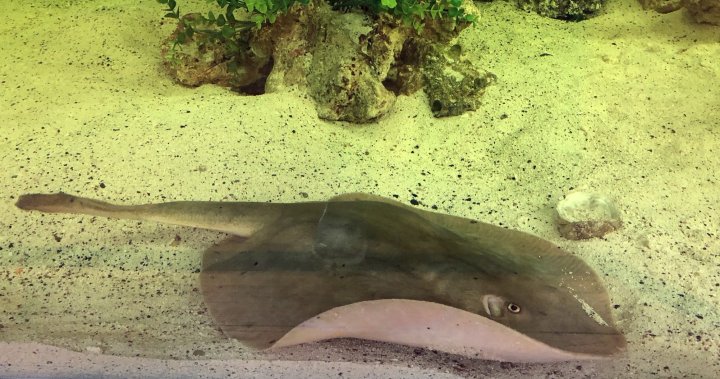Charlotte, a female round stingray living in a North Carolina aquarium, apparently doesn’t need a man.
Staff at the Aquarium and Shark Lab in Hendersonville, N.C., are celebrating more than just Valentine’s Day this month after they discovered that Charlotte, despite not having a mate, is pregnant.
Initially, employees at the aquarium thought Charlotte was simply becoming a little chunky, perhaps due to overfeeding. But when a lump on Charlotte’s back continued to swell, they worried she may have a tumour and ordered an ultrasound, AP reported.
The ultrasound didn’t find any signs of poor health, but the discovery still left staff scratching their heads.
Though Charlotte has not shared a tank with a male stingray in eight years, her four pups are due in about two weeks.
To employees at the aquarium, Charlotte serves as proof that nature always finds a way.
Charlotte made a splash earlier this week when reports emerged that the stingray could have become pregnant after interspecies mating with one of five small bamboo sharks in her tank.
Get the latest National news.
Sent to your email, every day.
But after consulting with international experts on Charlotte’s pregnancy, the aquarium said a rare phenomenon called parthenogenesis is more likely to blame.
Parthenogenesis, also called virgin birth, is a type of asexual reproduction that can see a female create an embryo without fertilizing an egg with sperm. (And no, it’s not the same as true cloning, as the offspring often does not share the exact same genetics as its parent.)
With parthenogenesis, an embryo is created after a female’s egg fuses with another cell, causing a split. Most offspring produced by parthenogenesis are female.
Several species of plants, insects, fish and lizards are capable of parthenogenesis, though it has never been observed in mammals.
Kady Lyons, a research scientist at the Georgia Aquarium in Atlanta, told AP News that Charlotte’s pregnancy is the only known case of parthenogenesis for her round stingray species.
As for the suggestion that Charlotte could have been impregnated by a shark, Lyons said that’s impossible. Besides being different sizes, the animals wouldn’t match up anatomically. Neither would their DNA.
“We should set the record straight that there aren’t some shark-ray shenanigans happening here,” said Lyons.
It is not entirely clear why parthenogenesis occurs, though it is believed to be due to a lack of suitable male mates in remote or isolated environments like zoos, aquariums and at extreme ocean depths.
The Aquarium and Shark Lab is run by the educational nonprofit Team ECCO, and will conduct genetic testing on Charlotte’s offspring if they are born and survive.
In a statement posted to their social media page, the aquarium called Charlotte’s pregnancy “our gift.”
“Just because something has not happened or has not been documented does not make it impossible,” aquarium executives wrote. “Science is discovery. And besides, none of us know what has happened in the big ocean because we are not always there.”
Last year, researchers said a female crocodile from a zoo in Costa Rica exhibited signs of the first-known case of parthenogenesis for the species. The crocodile, who had apparently not been in contact with a male crocodile in nearly 16 years, was able to produce an egg containing a fetus.
The fetus was stillborn.
— With files from the Associated Press
© 2024 Global News, a division of Corus Entertainment Inc.










